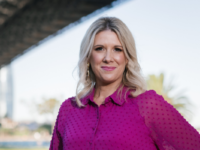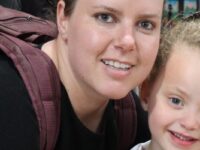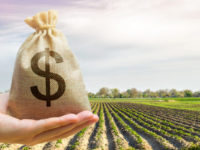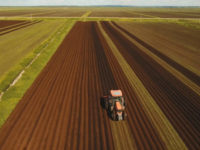Award-winning beekeepers and hive manufacturers Ann and Jeff Ross of Hive Haven have turned their backyard enterprise into a commercially successful business that champions Australia’s most valuable insects.
Ann and Jeff Ross never intended to become beekeepers and hive manufacturers. But when a colony of European honeybees moved into the wall of their mechanical workshop, Ann – at the time a mature-aged student at the University of the Sunshine Coast (USC) – read about the potential of the Australian stingless native bee and invested in eight colonies.
Soon after that, a heat wave caused the colonies to melt, so Jeff set about building a native bee box to alleviate hive overheating. Ann was studying some entrepreneurial subjects at USC and entered a pitch competition, winning a year’s membership with the Innovation Centre Sunshine Coast, which gave the Rosses the start-up help they needed to establish the company they called Hive Haven.
Beginning with 10 concept hives in south-eastern Queensland in 2014, Ann and Jeff have trialled and tested eight prototypes with the help of scientists, researchers, engineers, and beekeepers who have given their time freely to help design and innovate. Version nine of their concept addresses hive overheating. Hive Haven now supplies products both locally and overseas.
“Australian stingless native bees are the most important pollinator of many of our food crops,” Ann explains. “We are focused on raising the profile of the Australian stingless bee through sustainable farming practice. The Hive Haven V9 native bee box protects native bees from increasing heat waves and enables the harvesting of clean honey and propolis.”
With the objective of educating the consumer using best practice, Hive Haven strives to be a good corporate citizen. “We advocate and demonstrate ethical farming practice with a strong focus on building a sustainable native bee industry,” Ann says.
Manufactured on the Sunshine Coast from roto-moulded recyclable plastic, the V9 native bee box includes a 70mm hollow cavity that can be filled with either a liquid or soft solid insulator. “This technology is an industry first and fills a real need to enable native bees to be farmed for pollination, honey, and cerumen production in regions of Australia and overseas that previously were unsuitable due to climatic conditions,” Ann explains.
“Aboriginal and Torres Strait Islander people have used native honey as a food and medicine source for tens of thousands of years, and it is rapidly” becoming more widespread in its use, Ann says. “It’s often seen as a novelty honey; however, it’s set to rival Manuka honey for its health-giving properties.”
Determined to create an ethical and sustainable native bee industry that will protect this endangered species, Ann and Jeff have developed Seeds For Bees to help them thrive. “A green lawn looks like a green desert for a bee,” Ann explains. “We’re often asked, ‘What can I plant in my garden to help bees?’ Our pollinator mix has taken years to fine-tune. We’ve chosen quick, easy-to-grow herbs, vegetables, and flowers that provide pollen and nectar.”
Hive Haven is building a portfolio of high-value, export-quality ‘Australian made’ products using sustainable practice throughout their supply chain. “We have moved over to 100 per cent recycled plastic this year, which has been huge.” Ann enthuses. They also donate 10 per cent of honey and seed sales to installing and sponsoring hives at local schools and retirement villages.
The pair won first prize for the Most Effective and Innovative native bee box at the Australian Native Bee Conference in 2019 and installed two hives at Australian Parliament House. Then, in late 2021, Ann and Jeff made Hive Haven their full-time priority, having juggled it and their mechanical repair business for seven years.
“We are keen to expand our product offering and be part of creating a better planet,” Ann says. “Lots of people our age are looking for job satisfaction and new challenges. COVID has helped us understand why we do what we do. No one is too old to change job direction.”
This article first appeared in issue 35 of the Inside Small Business quarterly magazine
















